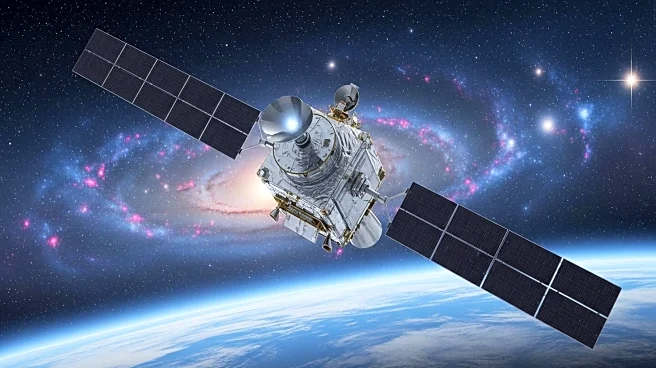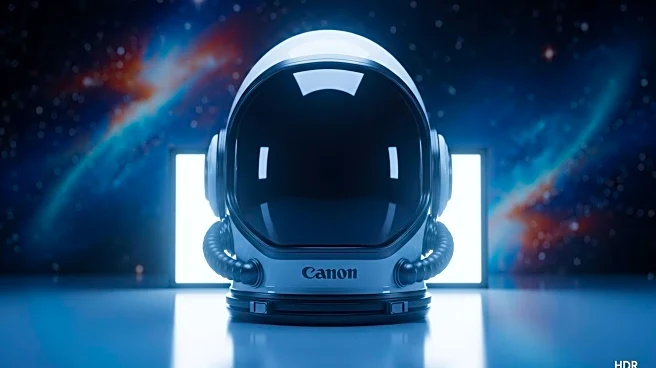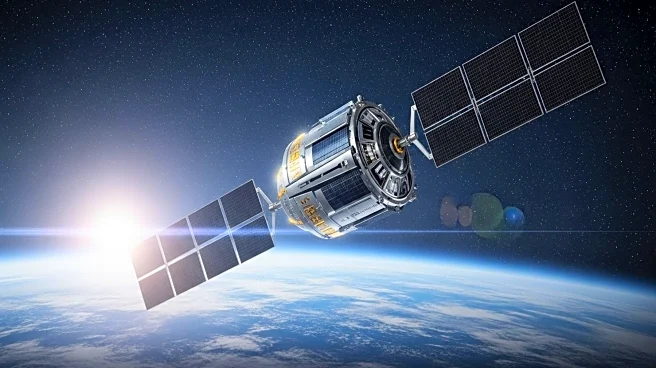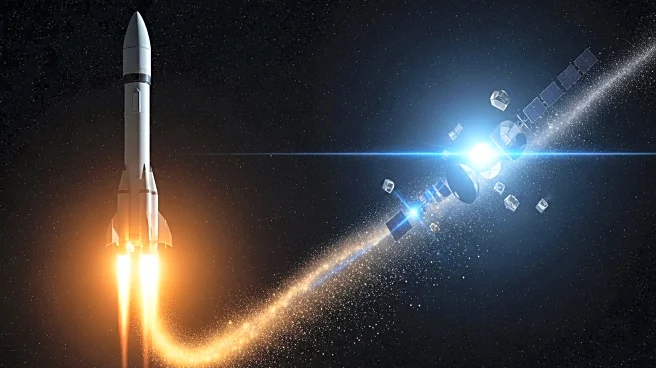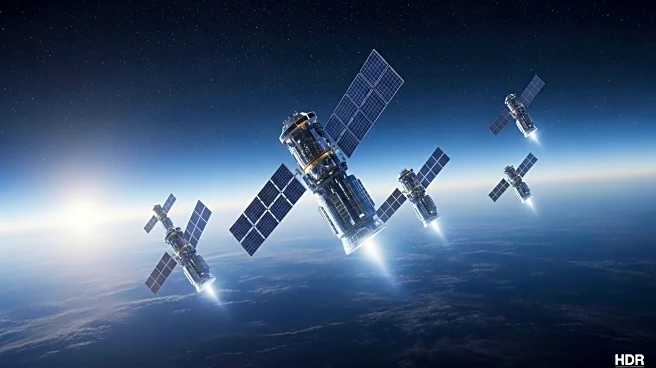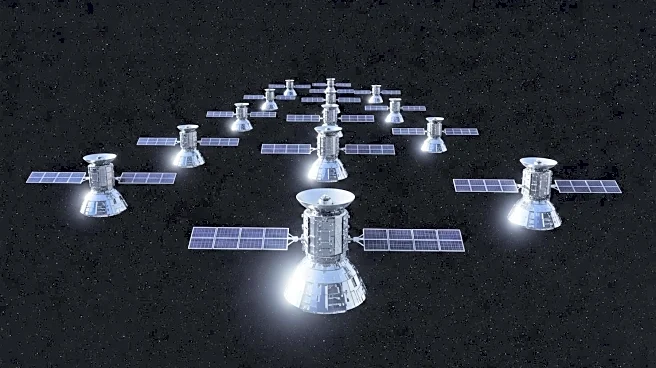What's Happening?
NASA astronaut Don Pettit, known for his photography skills, captured a remarkable video of SpaceX's Starlink satellite train during his mission aboard the International Space Station (ISS). The video, posted on October 7, 2025, shows the satellites sparkling in sunlight against a backdrop of green auroras, which are created by solar particles interacting with Earth's atmosphere. Pettit noted that the satellites were as bright as Jupiter, with visibility lasting from one to ten seconds. This observation highlights the brightness of the Starlink satellites, which currently number around 8,600 in orbit. Pettit recently concluded his 220-day mission on the ISS, returning to Earth on his 70th birthday, April 20, via a Russian Soyuz spacecraft.
Why It's Important?
The visibility of SpaceX's Starlink satellites raises concerns among astronomers, as their brightness can interfere with astronomical observations. Additionally, the increasing number of satellites poses risks related to space debris and potential atmospheric pollution from reentry. SpaceX has attempted to mitigate these issues by altering the reflectivity of some satellites and ensuring they can be maneuvered to avoid collisions. The Starlink project aims to provide reliable internet service to remote areas, but the potential environmental and observational impacts are significant considerations for the scientific community.
What's Next?
SpaceX plans to expand its Starlink constellation to as many as 42,000 satellites, which could exacerbate existing concerns about space debris and interference with astronomical research. The company continues to work on solutions to reduce the satellites' impact on observations, such as adjusting their reflectivity. As the constellation grows, ongoing dialogue between SpaceX and the scientific community will be crucial to address these challenges and find a balance between technological advancement and environmental stewardship.
Beyond the Headlines
The deployment of large satellite constellations like Starlink represents a shift in how global internet access is provided, potentially bridging digital divides in underserved regions. However, it also raises ethical questions about the commercialization of space and the responsibility of private companies to minimize their environmental footprint. The long-term implications of such projects could influence future space policy and international regulations concerning satellite deployment and space debris management.



